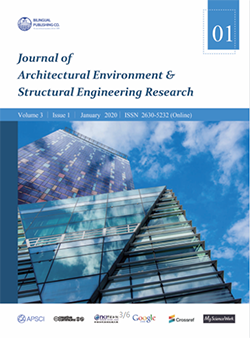-
370
-
218
-
182
-
180
-
173
Impact of Autonomous Vehicles on Parking Spaces
DOI:
https://doi.org/10.30564/jaeser.v3i1.1834Abstract
The United States has an enormous supply of parking and with the appropriation of Autonomous vehicles, the interest for these spaces could change drastically. Parking is among the most pervasive land utilizes involving up to 31% of urban territory. With completely automated vehicles expected on the customer advertise by 2020, the $30 billion leaving industry will encounter gigantic changes as autos develop. The purpose of this paper is to analyse how the parking and garage spaces can be utilized after the implementation of automated vehicles in every household. Analysis has been conducted about different households in Ypsilanti Township using Zillow application which includes the address, area of the house, parking area and year in which it is built. Results are based on the analysis conducted on the houses and the impact of the autonomous vehicles on their parking space.
Keywords:
Structure;Garage;Household;TransitReferences
[1] IEEE (2012), Look Ma, No Hands! IEEE Advancing Technology for Humanity News Releases, at http://www.ieee.org/about/news/2012/5september_2_2012.html
[2] Litman, T (2015), Autonomous Vehicle Implementation Predictions: Implications for Transport Planning, Victoria Transport Policy Institute at http://www.vtpi.org/avip.pdf
[3] Hoyt, Homer. "Recent distortions of the classical models of urban structure." Land economics 40.2 (1964): 199-212.
[4] United States Department of Agriculture: Economic Research Service. "Summary Table 1 -Major Land Uses." 31 Jan. 2017, https://www.ers.usda.gov/data-products/major-land-uses/. Accessed 26 Jul. 2017.
[5] Lecraw, C. S., & Smith, W. S. (1947). Zoning Applied to Parking. Eno Foundation for Highway Traffic Control.
[6] Jakle, J. A., & Sculle, K. A. (2004). Lots of parking: Land use in a car culture. University of Virginia Press.
[7] Shoup, D. C. (2005). The high cost of free parking (Vol. 206). Chicago: Planners Press.
[8] Mulley, C., & Ison, S. (2014) Transport and Sustainability. Vol. 5, Parking: Issues and Policies. United Kingdom: Emerald Publishing.
[9] Shoup, D. (2011). Free Parking or Free Market. Unbound Magazine, Cato Institute. Washington, DC. https://www.cato-unbound.org/2011/04/04/donald-shoup/free-parking-or-ree-markets
[10] Ferguson, E. (2004). Zoning for parking as policy process: A historical review. Transport Reviews, 24(2), 177-194.
[11] Chester, M., Fraser, A., Matute, J., Flower, C., & Pendyala, R. (2015). Parking infrastructure: A constraint on or opportunity for urban redevelopment? A study of Los Angeles County parking supply and growth. Journal of the American Planning Association, 81(4), 268-286. DOI:http://dx.doi.ore/10.1080/01944363.2015.1092879.
[12] Maunsell, (2014) Realising the benefits of autonomous vehicles in Australia, Accenture.
[13] Litman (2014) Autonomous Vehicle Implementation Predictions: Implications for Transport Planning, Victoria Transport Policy Institute.
[14] Enoch, (2015) How a rapid modal convergence into a universal automated taxi service could be the future for local passenger transport, Technology Analysis & Strategic Management, 27(8)910–924.
[15] Skinner, R. and N. Bidwell (2016) Making Better Places: Autonomous vehicles and future opportunities, WSP | Parsons Brinckerhoff.
[16] Shi, L. and P. Prevedouros (2016) Autonomous and Connected Cars: HCM Estimates for Freeways with Various Market Penetration Rates, Transportation Research Procedia, 15, 389–402.
[17] Yang, K. (2016) Isolated intersection control for various levels of vehicle technology: Conventional, connected, and automated vehicles, Transportation Research Part C: Emerging Technologies.
[18] Bertoncello, and Wee (2015) Ten ways autonomous driving could redefine the automotive world, Article, McKinsey & Company.
[19] Fagnant, D. J., K. M. Kockelman and P. Bansal (2015) Operations of Shared Autonomous Vehicle Fleet for Austin, Texas, Market, Transportation Research Record: Journal of the Transportation Research Board,2536,98–106.
[20] Chester, M., Horvath, A., & Madanat, 5. (2010). Parking infrastructure: energy, emissions, and automobile life-cycle environmental accounting. Environmental Research Letters, 5(3), 034001.
Downloads
How to Cite
Issue
Article Type
License
Copyright © 2020 NIKHIL SAI YEKOLLU

This is an open access article under the Creative Commons Attribution-NonCommercial 4.0 International (CC BY-NC 4.0) License.




 NIKHIL SAI YEKOLLU
NIKHIL SAI YEKOLLU





